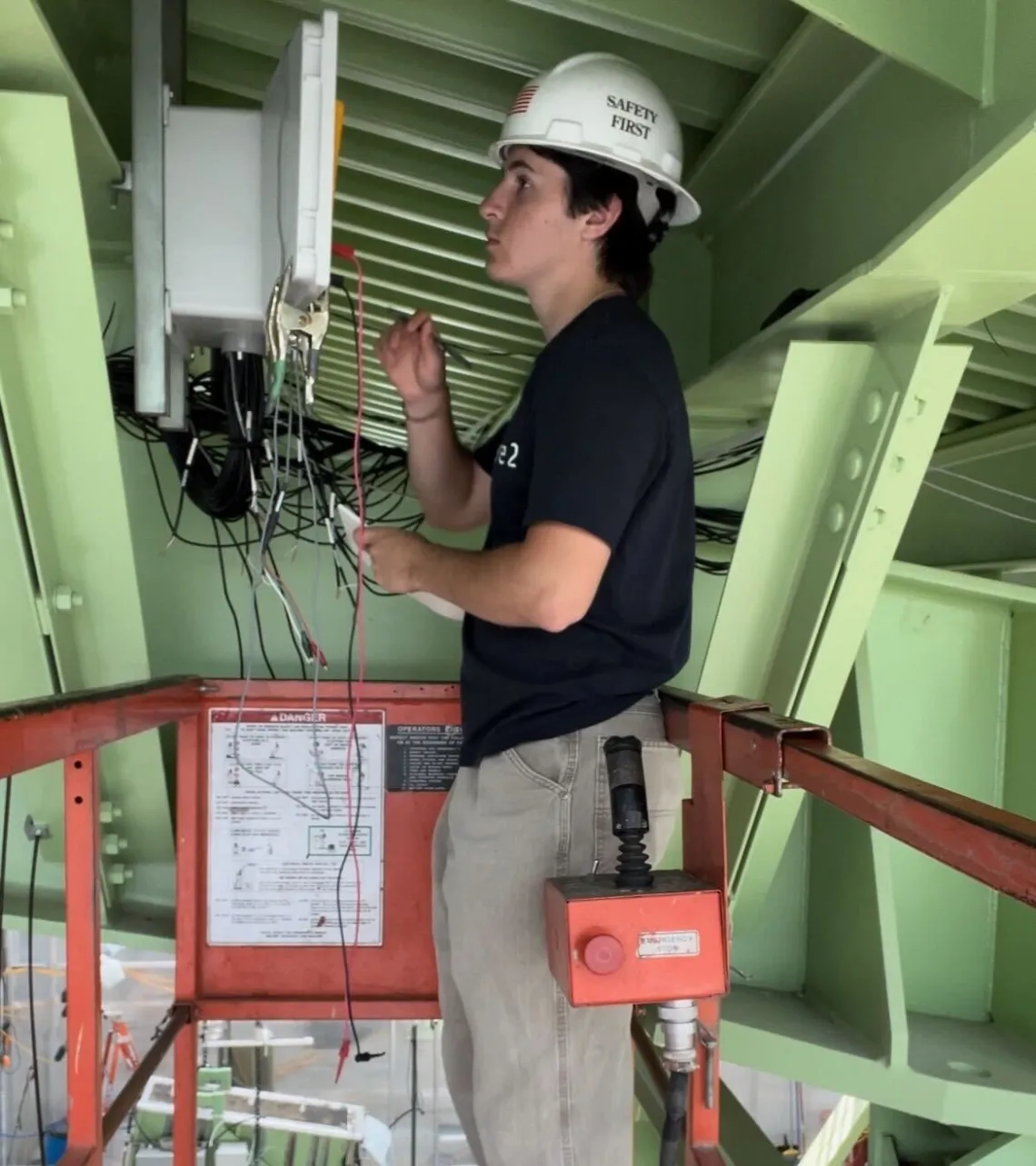Students compile data to yield insights into plant growth
The University of Arizona Biosphere 2’s research and development team at the Landscape Evolution Observatory, including three student workers, are installing and will reap data from new imaging equipment.

Jacob Taylor uses a multimeter and sensor reader to identify dead sensors at Biosphere 2.
Courtesy of Jacob Taylor
As new spectral imaging equipment is installed in Biosphere 2’s Landscape Evolution Observatory (LEO), it’s all hands on deck for the research and development team at the world’s largest closed ecological system.
The team, led by research and development engineer and scientist Wei-Ren Ng, was recently awarded the Office of Research, Innovation & Impact (RII) enhancement grant, enabling the addition of spectral imaging onto existing equipment in the LEO.
The LEO, a laboratory experiment consisting of three artificial hill slopes inside three adjacent bays, is designed to help scientists better understand the complex ebb of interactions between air, water, soil, plants, and microbes. These questions include how climate change affects water flow and how ecosystems adapt to environmental shifts.
Once installed, the new imaging equipment will enable more detailed monitoring of plant growth on LEO’s slopes eliciting additional data that will lead to a deeper understanding of ecosystems. Ng collaborates with university staff and undergraduate student workers to install the equipment and ensure smooth operations for researchers.
“In a large facility like LEO, we collect a lot of data. By getting involved with hands-on, data-related work at Biosphere 2, these students are learning to tackle challenges, think on their feet, and find self-confidence,” said Ng.
Guided by Ng and other full-time staff, students undertake various tasks related to data processing, analysis, and visualization. They develop their own solutions, set deadlines, and present their ideas to the group for feedback.
Jacob Taylor, an undergraduate student double majoring in Computer Science and Water Resource Economics, uses his coding skills to help with data processing and analysis at LEO, measuring CO2 emissions by calculating water and gas fluxes on the slopes.
“Being in this setting and seeing how real research is done is super helpful and a learning experience you can’t get from going to class alone,” Taylor said. “My coursework has informed everything I do at Biosphere 2, but the work here really feels like something a researcher would do. I’m gaining skills I’ll use for the rest of my life.”
Researchers at Biosphere 2 use the data collected from LEO to uncover connections across different scientific fields, a process known as convergence science. For instance, they compare findings from hydrologists and molecular biologists to identify similarities.
Specifically, researchers focus on measuring the amount of CO2 and water vapor emitted or absorbed by the hill slope. A positive result indicates that the slope emits CO2, while a negative result suggests the opposite. These findings shed light on soil health and plant growth.
“As someone who is interested in pursuing a career in research, this experience contributing directly to the datasets they’re using has been invaluable,” Taylor said.
Extra Info
Every summer, Biosphere 2 offers Research Experiences for Undergraduates (REU). Funded by the National Science Foundation, 10 students have the opportunity to apply for a 10-week long internship. They get to conduct guided research in both individual and group settings.
Biosphere 2 also runs several vertically integrated projects (VIPs), one of which gives undergraduate students the opportunity to work with a transdisciplinary team of engineers, scientists, and researchers. This specific VIP, housed in LEO, focuses on terraformation and understanding feedback mechanisms between life, hydrology, and geochemistry.

